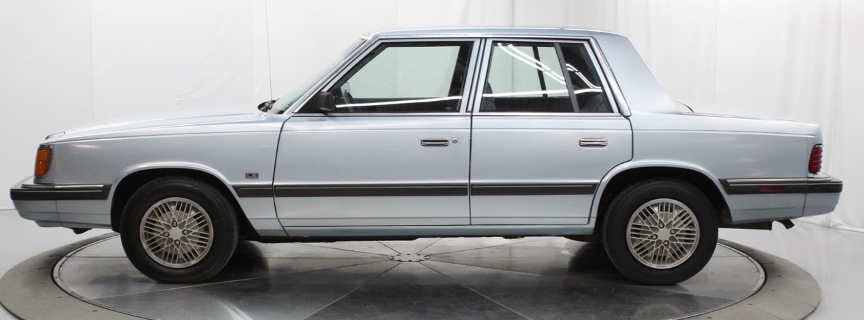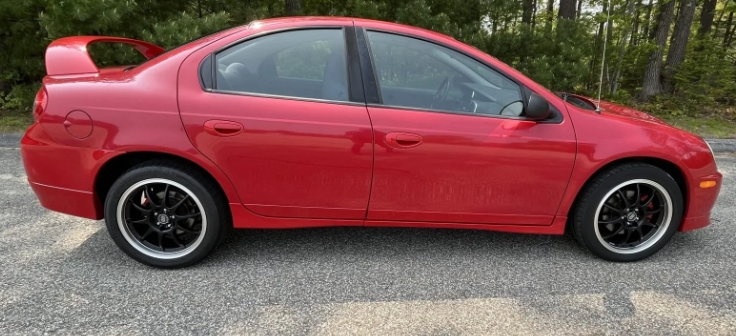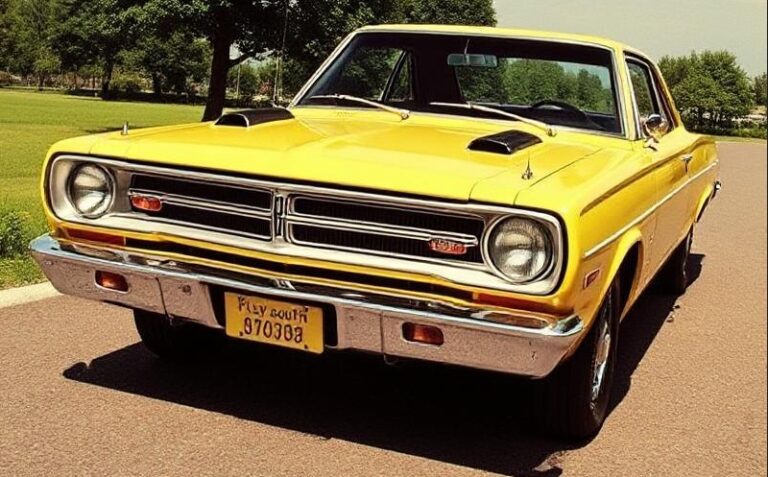The Plymouth Reliant: An Overview of Its Evolution
The Plymouth Reliant, a quintessential American compact car, epitomized the automotive tropical climate of the 1980s and continues to hold a spot in the hearts of car enthusiasts. As part of Chrysler Corporation’s K-Car platform, it played a pivotal role in stabilizing the company during financially tough times. Let’s dive into the details of the Plymouth Reliant’s evolution, from its inception to its untimely demise.
Production Years and Context
The Plymouth Reliant was produced from 1981 to 1989, which was a significant period for American automotive history. The early ’80s were marked by economic challenges, including oil crises and heightened competition from foreign automakers. Chrysler, under the leadership of Lee Iacocca, turned to the K-Car platform, which became essential for reviving the company’s fortunes. The Reliant was one of the key models that emerged from this platform.
Model Overview: Key Generations and Trims
1981 – 1982: Introduction of the Reliant
Launched in 1981, the Plymouth Reliant was introduced as a compact car to compete with other small cars dominating the market. The Reliant was initially available as a two-door coupe and a four-door sedan. The Reliant was built on Chrysler’s K-Car platform, which offered front-wheel-drive and unibody construction.
Trim Levels in 1981-1982:
- Base Model: The standard model was barebones, providing essential features to appeal to the price-sensitive buyer.
- Custom: This trim included additional comfort features such as upgraded upholstery and a better sound system.
- SE: The SE trim came with more luxurious interior appointments, offering a more refined driving experience.
1983: The Reliant Becomes More Refined
By 1983, the Reliant had begun to establish itself in the compact car market. It was clear that consumers appreciated the car’s straightforward design and value proposition.
Trim Levels Introduced in 1983:
- Base: Continued as a cost-effective entry point.
- Custom: Retained its features while introducing minor updates.
- SE: The SE trim was more accessible with its appealing features, including air conditioning and a more stylish interior.
1984 – 1986: Evolution and Options
Between 1984 and 1986, the Reliant continued to evolve. Chrysler capitalized on the K-Car’s reliability and offered a variety of engine choices, expanding the vehicle’s footprint in the market.
Trim Levels during this period:
- Base: Largely unchanged, this was still aimed at budget-conscious consumers.
- Custom: Mid-level options began incorporating more technology, including improved audio systems and optional power features.
- SE: By now, the SE was a well-equipped trim, often furnished with a digital speedometer and other comfort features.
- ES (introduced in 1984): The ES trim represented a performance-oriented version, featuring sporty styling cues and a more powerful engine option.
1987 – 1989: Final Changes and Legacy
As the globe shifted into the late ’80s, the Plymouth Reliant faced increasingly stiff competition from new entrants in the compact car market. Despite this, its loyal following remained, and it encountered several updates to maintain relevance.
Final Trim Levels (1987-1989):
- Base: The entry-level trim still appealed to those looking for cost-effective transportation.
- Custom: The Custom continued refining its offering, though it was slowly being eclipsed by newer entries in the market.
- SE and ES: These remained popular among consumers looking for that touch of extra comfort and sportiness.
- New York Edition (released in 1988): This limited edition celebrated the brand’s New York heritage, featuring special badges and unique trim colors, though it was largely a bespoke embellishment on existing trims.
.
NO MORE dead batteries with this:

.
Engine Options and Performance
Through the years, the Plymouth Reliant was offered with various engine configurations. The most common engine during the initial production years was a reliable 2.2-liter, 4-cylinder engine, which could produce around 84 horsepower. In later years, a turbocharged 2.2-liter engine produced up to 146 horsepower, catering to those desiring a sportier driving experience. The engines were typically mated to a 3-speed automatic transmission, though some models could also be equipped with a 5-speed manual.
Design and Features
The Plymouth Reliant was designed with simplicity in mind, favoring functionality over flamboyance. Its exterior was characterized by smooth, rounded lines, providing a clean and easy-to-live-with aesthetic. Inside, the car emphasized comfort; while some materials were basic, the design focused on practicality and ease of use.
Key features that evolved over the years included:
- Basic radio systems and am/fm/cassette players
- Air conditioning, which became increasingly standard
- Power windows and locks on higher trims
- Enhanced safety features, including optional airbags in later models
Cultural Impact and Decline
The Plymouth Reliant became a familiar sight on American roads during the 1980s, characterized by its affordability and practicality. It also inspired much of its competition, as many automakers began to produce their own compact vehicles during this period.
However, by the late ’80s, market shifts stimulated by consumer preferences and increasing competition began to take their toll on the model. The rise of Japanese compact cars and hatchbacks offered more sportiness and design flair that appealed to younger buyers.
Conclusion and Legacy
The Plymouth Reliant was officially discontinued in 1989, marking the end of an era. Its significance to Chrysler’s recovery in the early 1980s remains a vital chapter in automotive history. While the Reliant may not have the visceral allure of sports cars or the prestige of luxury vehicles, its practicality, reliability, and affordability endeared it to many drivers across America.
Today, enthusiasts often remember the Reliant not to merely reflect on its car features, but also to appreciate the story it tells about an era of transformation in American automotive history. The ordinariness of the Plymouth Reliant provides a narrative of commonality, chronicling the significant response to changing market needs and economy in America. Even in its time, the Reliant serves as a reminder that sometimes, reliability can be just as captivating as speed.







